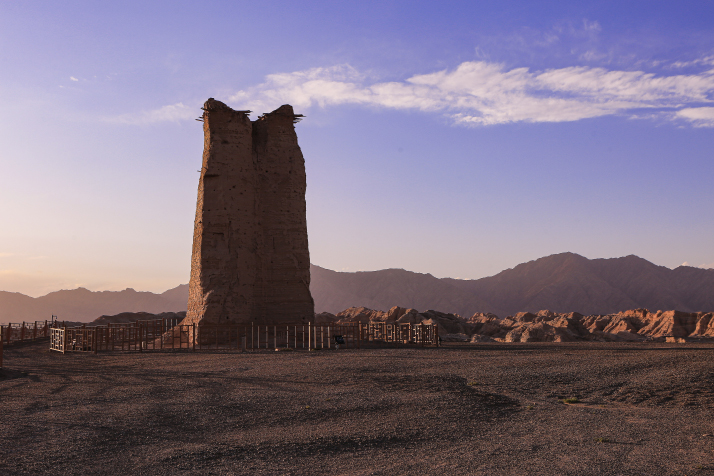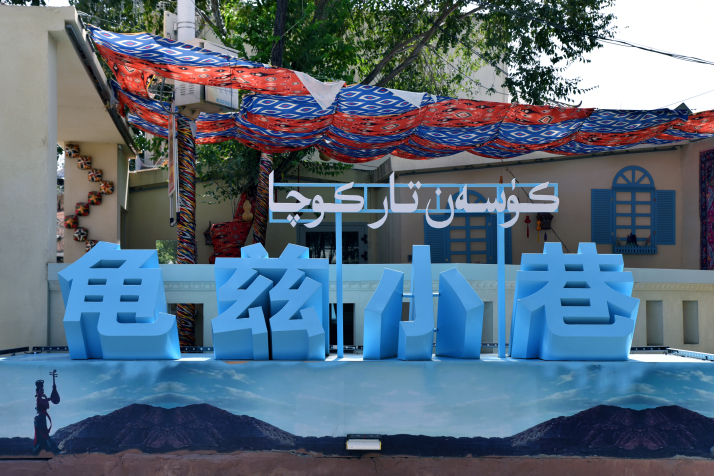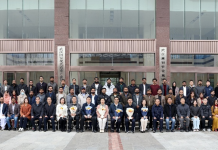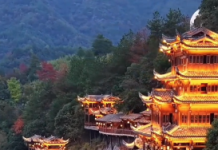
Tang Dynasty (618-907) monk-scholar Xuanzang traveled to this prosperous oasis city in the seventh century. His description in the Great Tang Records on the Western Regions, paint a vivid picture of Qiuci, a legendary capital of art, music and dance in Xiyu, or the Western Regions, a term once used to describe today’s Xinjiang and Central Asia.

Though the name Qiuci has faded with the tides of history, its legacy endures mainly in the modern Aksu Prefecture, which still carries the glory of this Silk Road metropolis. According to the Book of Han and the Book of Jin, official historical records of the Western Han (206 B.C.-A.D. 25) and Jin (265-420) dynasties, the ancient region of Qiuci was a crucial hub for trade and cultural exchange along the Silk Road. The historical sites of ancient Qiuci are spread across what are now Kuche (also spelt Kucha and Kuqa) and Aksu cities as well as Baicheng, Xinhe and Shaya counties in Aksu Prefecture. They can also be found in Luntai, Bayingolin Mongolian Autonomous Prefecture neighboring Aksu.
Kuche is a major city in Aksu Prefecture. It has two ancient towns—one flourished from the Han Dynasty (206 B.C.-A.D. 220) to the Tang Dynasty and the other dates back to the Ming (1368-1644) and Qing (1644-1911) dynasties. The two are located close to each other, with some areas where they converge. The city’s ancient residential architecture covers an area of approximately 836,000 square meters, with 183 residences over 80 years old, according to newspaper Guangming Daily. Time has taken its toll on many of these structures.
To breathe new life into these historic buildings, the city government launched the Save Old Houses initiative in 2023. More than 150 local craftspeople formed a restoration team under the guidance of national experts in ancient architecture.
“They adhere to the principle of replacing nothing that can be repaired, and using original materials, techniques, styles, and methods for restoration,” said He Yan, Director of the Qingcheng Ruixian Digital Technology Research Institute in Beijing, which conducted a comprehensive survey of all the ancient residences in Kuche and invited renowned cultural heritage experts from across China to train local traditional craftspeople. “This approach preserves the cultural essence of the ancient residences, allowing their historic charm to shine once more,” he said.
Li Yongge, a research curator from the Palace Museum, located within Beijing’s Forbidden City complex, traveled from the capital to assist the craftspeople in employing local traditional techniques to ensure the restoration respected the original architectural characteristics and local aesthetics. The Forbidden City housed China’s imperial palace from the 15th century to the early 20th century. Through their combined efforts, the first phase restored 35 ancient residences, repairing slanted beams, damaged pillars and collapsed walls to reveal their original beauty.
“Restoring old houses is about restoring culture,” said Maynur Aihai, a local official. In recent years, a 1-km-long historic street has been transformed into Qiuci Alley, a dynamic destination steeped in Qiuci culture, featuring unique cuisine, ethnic costumes, music, instruments and ceramics.
The city took a micro-renovation approach to Qiuci Alley. Instead of demolishing structures, it improved basic infrastructure such as water and electricity while preserving the original buildings. Facade improvements, decorations, and the collection and exhibition of ancient artifacts have helped turn the once-overlooked street into a thriving tourist attraction.
As the restoration of old residences was underway, alley residents, witnessing the changes, also began to take action to beautify the neighborhood. The alley, once cluttered with debris and garbage that emitted an unpleasant odor, was gradually transformed.

“Many people opened their doors and volunteered to help. Even people not directly involved often brought us tea, watermelon and snacks,” said Maynur. Over 4,000 residents from the neighborhoods participated in the initiative.
In their desire to beautify the alley, some residents generously donated their cherished belongings. One former resident remarked to a community worker, “My family has moved away, so we can’t directly participate in the renovations. However, we have some beautiful dishes and old items at home—perhaps you can use them?”
Today, as visitors stroll along the alley, they encounter a new sight at every step, each filled with delightful surprises. Hanging decorative gourds, roadside flowers and colorful wall decorations adorn the path. These designs were created by professional designers but inspired by the ideas and suggestions of local residents.
Kuche Through Time
The city of Kuche, historically known as Qiuci, is a captivating region nestled in the central southern foothills of the Tianshan Mountain Range and along the northern edge of the Tarim Basin. Covering 14,500 square km, it is home to a population of 550,000. Strategically positioned between Urumqi and Kashi, two major cities in north and south Xinjiang, respectively, Kuche serves as a bustling hub for air, rail and road transport in south Xinjiang.
In 2023, its GDP reached 40.311 billion yuan ($5.5 billion), demonstrating a year-on-year growth of 5 percent.
Kuche, also spelt Kucha and Kuqa, has a rich administrative history, once serving as the seat of the Grand Anxi Frontier Command, one of the two frontier commands the Tang Dynasty (618-907) established to administer the Western Regions. Officially named Kuche during the Qing Dynasty (1644-1911), it has evolved over time from a prefecture to a county in 1913, and eventually to a county-level city in 2019.
Historically, Kuche was a crossroads of Eastern and Western cultures. This fusion birthed the Qiuci culture, leaving behind a legacy of Buddhist heritage, cave murals, inscriptions, music, dance, theater, artifacts and poetry. The region’s famed music and dance reached the Central Plains over 2,200 years ago, influencing the reconstruction of Chinese classical music. During the Tang Dynasty, Qiuci music and dance flourished in the two capital cities of Chang’an (now Xi’an) and Luoyang, creating a golden era in Chinese music history.
In 2012, it was designated a National Historic and Cultural City by the Central Government.
Rich in resources, Kuche is home to over 2 trillion cubic meters of proven natural gas reserves and more than 2 billion tons of crude oil, which together account for over 90 percent of the proven reserves in the Tarim Basin.
Additionally, its abundant solar and thermal resources, combined with considerable temperature differences between day and night, create ideal conditions for large-scale agriculture. The city serves as a vital national and regional base for grain, cotton and livestock, and has been recognized by the Ministry of Agriculture as China’s Hometown of White Apricots.
Kuche also boasts exceptional tourism resources. The Kizilgaha Beacon Tower and the Subash Buddhist temple ruins are part of the Silk Road: the Routes Network of Chang’an-Tianshan Corridor, recognized as a UNESCO World Heritage site. Must-see attractions in the area also include the enigmatic Tianshan Grand Canyon and the Kizil Caves, one of China’s earliest large grotto groups. –The Daily Mail-Beijing Review news exchange item





